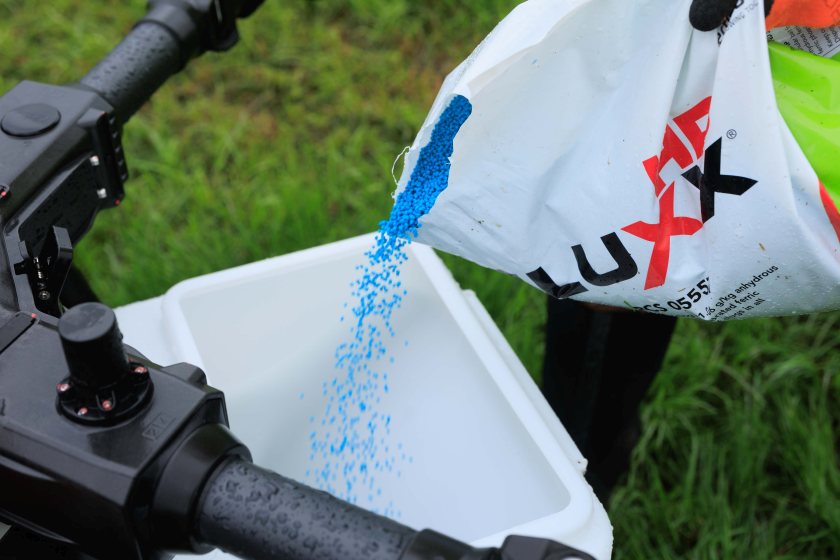
Applying plant protection products from drones has moved a step closer after a regulator granted a trials permit for a slug pellet product.
The decision paves the way for an Extension of Authorisation for Minor Use (EAMU) and the first commercial application of a pesticide to food or feed crops in the UK by drone.
The development is off the back of two years’ work by Staffordshire-based tech firm AutoSpray Systems, which first identified a market for heavy lift drones in farming back in 2019.
That autumn, similar to the one just passed, prolonged rain prevented growers from accessing land to drill seed, or to apply products like slug pellets or pre-emergence herbicides to crops established before it turned wet.
The company’s co-founder Andy Sproson said that Civil Aviation Authority (CAA) regulations have not explicitly excluded aerial application from unmanned aerial vehicles (UAVs) for some time.
However, use must be justified and to do this, AutoSpray systems wrote a specific risk assessment which was submitted to the CAA and the case accepted in December 2022.
Another missing piece of the puzzle was a pesticide regulatory framework, and the data to show how the product behaves when applied from UAVs.
Mr Sproson said he found regulator HSE-CRD helpful since approaching them about expanding agricultural drone use, advising on the necessary information to succeed with the company’s permit application.
“Firstly, we had to prove our competency to the CAA. Thankfully, we were able to do so, as the company has CAA Recognised Assessment Entity status. We also needed to outline the benefits of using drones in this way,” he explained.
These include application to land when ground machinery would damage crops and/or soil structure, cause compaction and increase run-off/pollution risk.
Drones can also be used to target applications when a blanket approach is not appropriate, or larger machinery is not as efficient, like when spraying off patches of grassweed.
Mr Sproson said: “We also required the backing of an existing product authorisation holder, and we now have this with Certis Belchim, which distributes Sluxx HP ferric phosphate slug pellets in the UK."
With the trials permit granted, he said AutoSpray Systems and Certis Belchim will now conduct ballistics testing.
This will demonstrate to regulators that the spreadability of the Sluxx HP pellet is as good as its proven to be from conventional applicators.
Once this data is submitted to CRD, an EAMU should be granted soon after and growers with access to a large payload drone – like the XAG P100 Pro imported by AutoSpray Systems – will be able to apply Sluxx HP slug pellets from the air.
In work carried out last year, the XAG specialist agricultural drone broadcast cover crop seed into standing cereals at speeds of 30-35kph.
Work rates of 15-20ha an hour is possible with one drone, multiple batteries, a generator, and fast charger. The same will apply to slug pelleting.
Mr Sproson said: “It’s the first time a new application method has been made available to growers for many years and offers an option that compliments conventional machinery."
